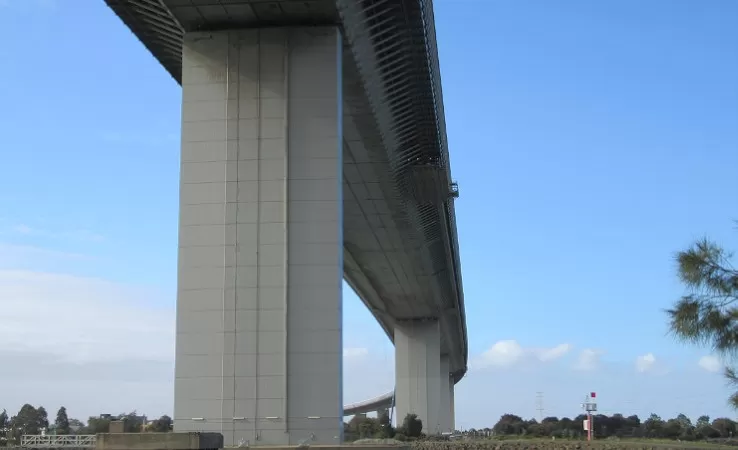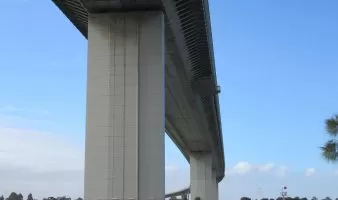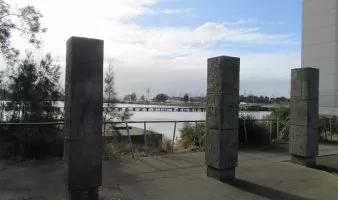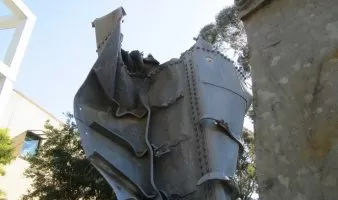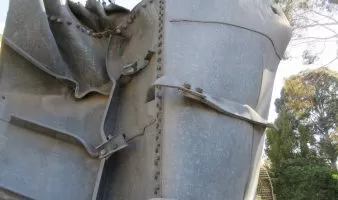I am old enough to remember the day the West Gate fell. Unlike the saccharine sorrow of today’s celebrity culture extracting tears for every trivial demise or faux grief for the anonymous victims of salacious crimes, the deaths of the thirty-five who died when the span fell were genuine tragedies. They went to work and were killed by the hubris of men who thought they were better. Somehow, I expected the memorial to these men to be… moving, poignant in a way that would speak of this great psychological scar. I was disappointed. While understatement can be the most moving and appropriate of memorials, the memorial to the men who died on the bridge looks more like an after thought than an understatement.
The rose coloured marble with the black supporting columns is precisely what one sees in the more elaborate tombs of a million cemeteries. It looks precisely like the headstone that I presume it is intended to be. It offers no aesthetics other than the brute statement of the men’s deaths. The bronze image of the completed bridge that tops the plaque has a certain tourist-brochure-attractiveness but is incongruous in the context.
It seems that this memorial was arranged and paid for by the bridge workers themselves. Perhaps that explains its lack, its commonplace texture. Perhaps it is the product of the local artisans without artifice but also without profundity. While I can see their desire to own the memorial in its entirety, if it had been me, I would have made the construction companies pay and pay and pay. The memorial might have exalted the meaning of these industrial deaths, so shocking, so unforgivable. As it is, the high minded rhetoric of “…workers in all lands..” is oddly undercut by the design of the plaque itself.
Other sculptural elements are also scattered around the site, largely overwhelmed by the soaring span of the bridge. Mark Stoner’s “minimalist row of 35 unnamed columns” aligned with the edge of the span that fell, are unpersuasive. The surrounding landscaping has not been maintained and although the view out over the river and the surrounding reclaimed river backwash is lovely and should inspire contemplation, there are no seats. One is not invited to stay. In addition, there is another unidentified black sculpture with graffiti and unclear purpose and a lump of granite marking the death of another worker who fell at a later date. While this does provide a seat of sorts (the symbolism of sitting on a memorial is a little odd) its back drop is an encroaching utilitarian power box plonked down on the edge of the park. The whole effect is confused, a largely meaningless product of unimaginative bureaucrats in the state government.
It is interesting to compare this melange of artefacts with the fragments that sit outside the Engineering department of Monash University. These are not designed but merely arranged. Even so, their simplicity screams a significance that is lacking in the memorial under the bridge.
If ever there was an event that deserved the full power of symbolic representation, this was surely it. What a pity that the West opted for being short changed even here.
For a discussion of the various proposals considered for the design of the memorial park see the link below. It seems the cheapest one won.
https://architectureau.com/articles/west-gate-bridge-memorial-park/
